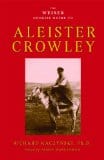
The Weiser Concise Guide to Aleister Crowley
, by Richard Kaczynski, edited and introduced by James Wasserman
Weiser Books, 978157634569, 126 pp. (incl. appendices), 2009
Richard Kaczynski is the author of the acclaimed biography, Perdurabo: The Life of Aleister Crowley (sadly out of print), and it’s not surprising that he is able to sketch the outlines of Crowley’s life so. Naturally, the book begins with a biography of Crowley, briefly describing his early life, his time at Cambridge, poetry, the Golden Dawn, the reception of Leiber AL vel Legis, the OTO and the A.’. A.’., the Abbey of Thelema and his end. The section concludes with an annotated list of twelve books of Crowley’s work as recommended reading.
Part I deals with “Mystical and Magical Societies”, specifically the A.’.A.’., Ordo Templi Orientis (OTO) and the Ecclesia Gnostica Catholica (EGC). The grade systems are outlined, and the Gnostic Mass is described.
In Part II Kaczynski looks at “Mysticism and Magick”, with outlines of various schools of magick which influenced Crowley’s system, such as quabbalah, hermeticism, Egyptian, yoga and others which make up the body of “Western Magic”.1 A few magickal exercises are outlined which will be familiar to Thelemites, or any student of magick: Liber Resh, the importance of asana, Liber Jugorum, the Lesser Banishing Ritual of the Pentagram, the Lesser Ritual of the Hexagram, the Star Ruby, and a brief chapter on sex magick which includes the Star Sapphire, without elucidating the veiled language employed in the ritual.
Four appendices conclude the book, with abridged tracts written by Crowley for the A.’.A.’. and OTO, the full text of Liber Oz, and contact information for a handful of OTO bodies.
In his introduction, James Wasserman writes that he had originally intended to write the present book, but “offered it” to Kaczynski, under the condition that “the work would be vetted and approved by a carefully chosen board of Thelemic scholars and magicians”.2
While reading this book, I sought to identify its targeted audience. Thelemites and long-time students of magick will already be very familiar with its contents, though collectors will of course, purchase anything involving Crowley.3 New students are often put off by the mythos surrounding Crowley, though the persistent will seek his source texts. As a “concise guide” it doesn’t offer much beyond a sketch with little commentary. A taste of Crowley? A Teaser?
Frankly, the curious but sceptical would do better to read Magick Without Tears and Book 4
, but for those who may not yet be ready for these (and other) larger, meatier texts, The Weiser Concise Guide to Aleister Crowley
may prove a brief yet solid introduction.
- A curious dropping of the “k”. Kaczynski seems only to use the term “magick” when referring to Crowley’s system, otherwise he reverts back to “magic”. An odd distinction in a book about Crowley, given Crowley’s preference for the spelling in regards to “the Science and Art of causing change in conformity with Will”. [↩]
- p. 7 [↩]
- Heck, I would’ve bought it if I hadn’t received this review copy! [↩]







